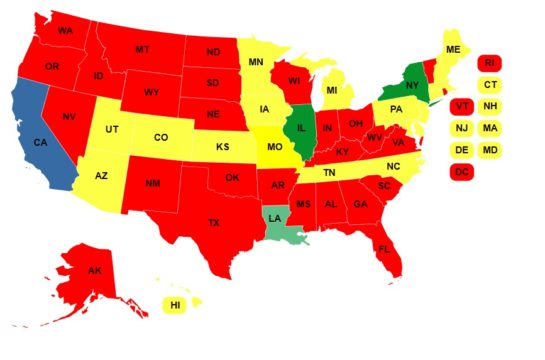The number is likely much higher due to the number of cases that go unreported each year.
For there to be change, there needs to be a multi-faceted approach. An essential facet is ushering in a shift in campus consent culture. This can be fostered by organizations formed within campus communities — like USG’s Sexual Misconduct Task Force — as well as larger organizations with unified missions that engage students throughout campuses across the country.
But, for there to be true progress, policy changes that improve the way in which students and administrators view sexual consent must accompany attempts to engage students on an individual basis.
Governor Andrew Cuomo of New York understands this. On Jan. 17, the two-term Democrat proposed a statewide “affirmative consent” policy on college campuses, including public and private universities such as Fordham University.
Cuomo’s proposed law would require universities to use an affirmative definition of consent when investigating a forcible sexual offense. “Affirmative consent must be ongoing throughout a sexual activity,” the law states, “and can be revoked at any time.” A lack of protest or resistance, the law states, does not equal consent. Neither does silence.
Fordham has a consent policy in its Campus Assault and Relationship Education (CARE) brochure, which defines consent as “all people in a sexual encounter agree to the sexual activity.” Agreement to sexual activity, the policy rules, means “there are informed, freely given, mutually understandable words or actions that indicate a willingness to participate in the particular sexual activity.”
The policy also states that a person “may decide at any time that he/she no longer consents and want to stop sexual activity.”
A “Yes Means Yes” law already exists in California, but it requires only state-funded universities to adopt an affirmative consent policy, thereby excluding many private universities in the state. The legislation proposed by Cuomo, however, would bind both public and private schools. With New York leading many state policy changes in the past, the law has the potential to be a model for similar policies around the country.
Whether the exact policy requires Fordham to alter its own policy (Christopher Rodgers, Dean of Students, said Fordham “would work to assure that our wording meets the standards set by the state when the new law passes”), a statewide law would both heighten awareness and standardize the state’s definition of consent.
Colleges, after all, are not vacuums: Students travel between them constantly, often visiting friends at other schools. Students would undoubtedly welcome knowing affirmative consent policies exist at every school in the state.
Beyond this, the reasons for the bill’s passing are many. An affirmative consent policy dispels the idea that there are expectations contingent upon unrelated actions. A visit to someone’s residence hall does not — and should not — mean anything more than that. A miscommunication should not bind a participant into thinking that a residence hall visit has already initiated consent.
As the proposed law would suggest, explicit consent to the particular sexual activity should be expressed.
There are those who believe an affirmative consent policy would require participants to procedurally affirm any sexual activity, resulting in an experience that becomes unnecessarily awkward and stiff. But, either verbally or physically, affirmative consent should be a standard, not a box to check off during a sexual encounter.
In addition to affirmative consent language, the proposed law would grant immunity from drug or alcohol violations for students reporting an assault. It would also standardize a bill of rights for the victim and policy training for all school officials. Such measures would encourage more students to report sexual offenses, even if illicit substances are involved.
The law’s critics suggest that a law can be difficult to enforce, inherently making it ineffective legislation. To some effect, they are correct: It is ambitious to expect one law to change all sexual encounters across the state. (There are more than one million students in the state.)
The law’s power comes from its standardization of consent for hundreds of thousands of students. It reframes how individuals engage in a sexual experience, placing much needed emphasis on consent and accountability.
It also places transparency, communication and safety at the center of sexual experiences. Students should welcome this change and urge their state legislatures to pass the law and ensure that its implementation moves as swiftly as possible.
Meet the Editorial Board





